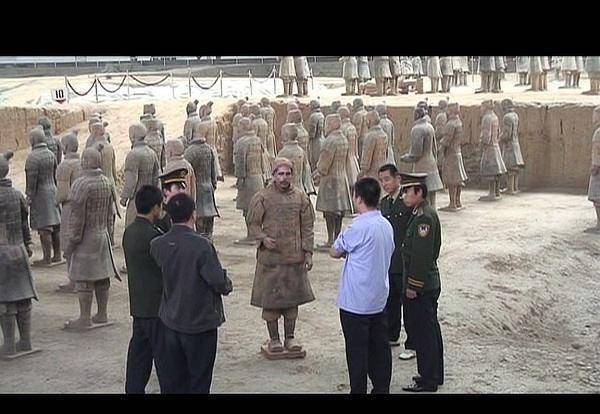
How Many People Built the Terracotta Army?
The Terracotta Army is a vast collection of terracotta sculptures depicting the armies of Qin Shi Huang, the first emperor of China. It is a massive and intricate work of art, and its construction is a testament to the power of the Qin dynasty. But exactly how many people were involved in this incredible feat?
Young Emperor
According to the writings of the court historian Sima Qian during the following Han dynasty, Qin Shi Huang ordered the mausoleum's construction shortly after taking the throne at the young age of 13. This suggests an ambitious ruler eager to solidify his legacy.
A Massive Workforce
Sima Qian states that over 700,000 laborers toiled on the project. This number is staggering, even by modern standards. To put it in perspective, the construction of the Great Pyramid of Giza is estimated to have involved around 100,000 workers. This demonstrates the vast manpower at the Qin emperor's disposal.
The Laborers
The laborers who built the Terracotta Army were not a homogenous group. They consisted of:
- Convicts: Sentenced to hard labor, these individuals formed a significant portion of the workforce.
- Commoners: Farmers and craftspeople were conscripted through a system of forced labor known as "corvée" common in ancient China.
- Skilled Artisans: Master potters, sculptors, and bronze casters were responsible for the high quality of the figures. They oversaw production and trained others, ensuring consistency and detail in the massive army.
Life on the Project
Life for the laborers was harsh. They worked long hours in dangerous conditions, and many perished during the construction. Archaeological evidence suggests:
- Organized Labor: The site was divided into sections, each potentially dedicated to a specific aspect of the project like pottery production or kiln operation, suggesting a structured work system.
- Hierarchies: Differences in burial goods found near laborer remains indicate a hierarchy even among the workers, with some potentially holding supervisory roles.
A Project Cut Short
The construction of the Terracotta Army was halted in 209 B.C. amidst uprisings a year after Qin Shi Huang's death. These rebellions ultimately led to the fall of the Qin dynasty and the rise of the Han. The unfinished state of some figures and sections of the mausoleum complex stands as a testament to this abrupt end.
Conclusion
While the exact number of people involved in the creation of the Terracotta Army remains unknown, historical sources and archaeological evidence point to a monumental undertaking involving hundreds of thousands of laborers from various walks of life. Their tireless efforts over decades resulted in one of the most iconic archaeological discoveries and a powerful symbol of ancient China's imperial might.
Q&A
Q: Who ordered the construction of the Terracotta Army?
A: Qin Shi Huang, the first emperor of China, ordered the creation of the Terracotta Army as part of his elaborate mausoleum complex.
Q: What happened to the laborers who worked on the Terracotta Army?
A: The fate of the laborers varied. Some likely died during the construction due to the harsh conditions, while others may have been released or continued to work on other projects after the Qin dynasty's fall.
Q: Why was the construction of the Terracotta Army halted?
A: The project came to an abrupt end in 209 B.C. due to widespread rebellions following the death of Qin Shi Huang. These uprisings ultimately led to the collapse of the Qin dynasty.